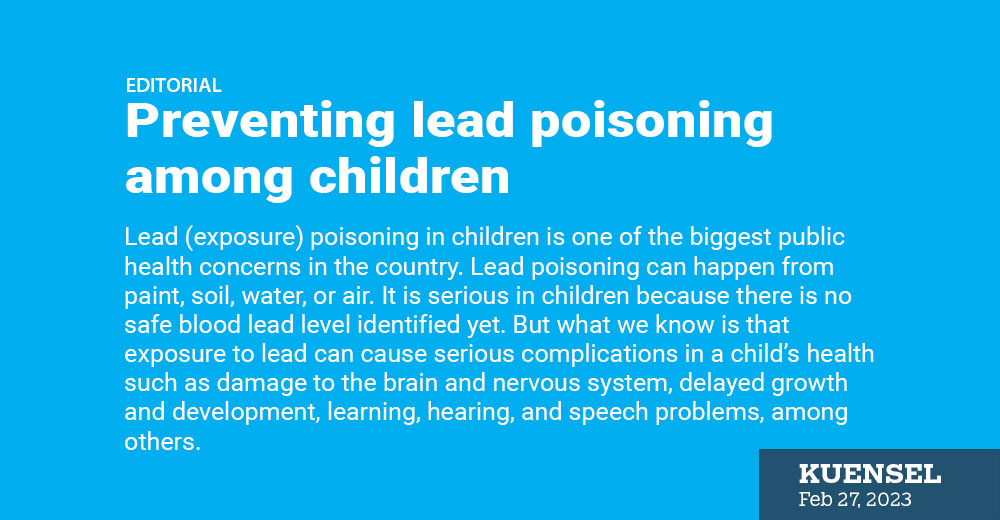Lead (exposure) poisoning in children is one of the biggest public health concerns in the country.
Lead poisoning can happen from paint, soil, water, or air. It is serious in children because there is no safe blood lead level identified yet. But what we know is that exposure to lead can cause serious complications in a child’s health such as damage to the brain and nervous system, delayed growth and development, learning, hearing, and speech problems, among others.
According to a study carried out by a group of nurses in Thimphu and Phuentsholing, 44 percent of Bhutanese children aged between two and 60 months have “dangerously” high levels of lead.
How are our children exposed to lead poisoning?
The study found excessive amounts of lead in 16 (2.1 percent) tests, of which 15 were detected from paint or plastic items on playground equipment in public playgrounds.
Lead-based paint and lead-contaminated dust in older buildings, according to well-placed studies, are common sources of lead poisoning in children. “Adults who work with batteries, do home renovations, or work in auto repair shops also might be exposed to lead.”
The study says that excessive amount of lead was found in playground equipment. Was it in the equipment themselves or the various paints they were covered in?
Among adults, lead poisoning can cause increased blood pressure besides the brain, kidney, and reproductive issues.
However, the good news is that lead is preventable.
Scientists and medical experts say that one way to prevent a child’s exposure to lead poisoning is by removing lead hazards from the environment. However, eliminating lead hazards from the places where our children live and learn and play can be very expensive.
Second, there is blood lead testing and follow-up care and referral.
The study says that the lack of local data on the potential sources of lead in the country stymied the efforts to reduce childhood lead exposure in the country. But we now have the base.
The study recommends developing and strengthening environmental, governmental policies, and initiating public health initiatives to reduce and eliminate lead poisoning.
These are good recommendations. Actions must follow as soon as possible.


